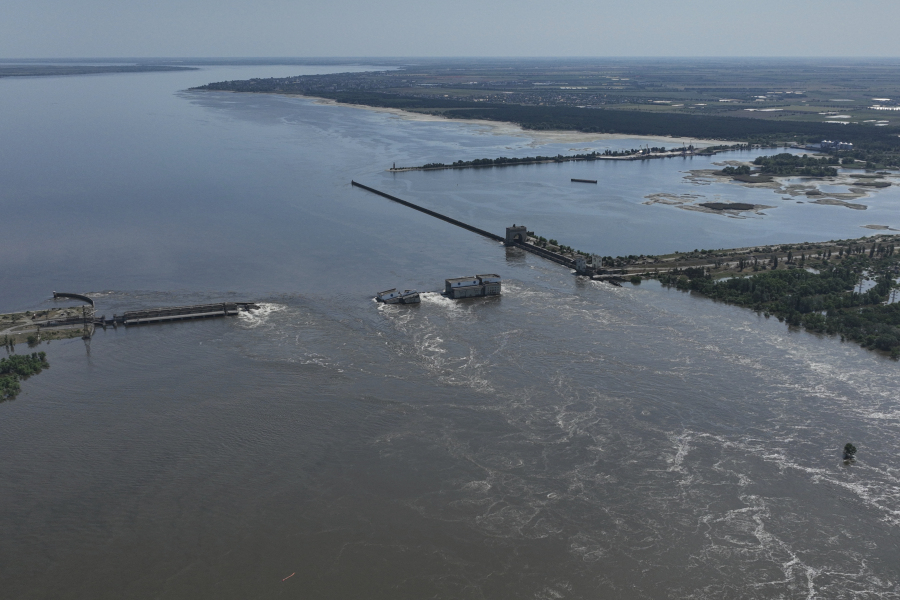MYKOLAIV, Ukraine (AP) — They recognized the TV repairman.
The residents of Oleshky in Russian-occupied southern Ukraine could not identify many of those they buried after a catastrophic dam collapse in June sent water coursing through their homes and shattered their lives. The bodies were too bloated and discolored, volunteer rescuers and health workers said. They described seeing faces that resembled rubber masks, frozen in that last frenzied gasp for air. But to those secretly keeping count of the drowned, Yurii Bilyi was no stranger.
The cheerful 56-year-old was a town fixture. He had serviced many homes and spent his days working from a shop just across the street from the churchyard where he was buried, in a hurriedly dug mass grave, The Associated Press has learned.
Anastasiia Bila, his daughter, remembers his last words clearly over the unstable phone connection. “Nastya,” he affectionately called her, hoping to soothe her anxieties as flood waters rose quickly, inundating 600 square kilometers (230 square miles), submerging entire towns and villages along the banks of the Dnipro River, the majority in Russian-occupied areas. “I’ve seen worse under occupation.”
Over six months since the catastrophic explosion that destroyed the Kakhovka Dam in the southern Kherson region, an AP investigation has found Russian occupation authorities vastly and deliberately undercounted the dead in one of the most devastating chapters of the 22-month war. Russian authorities took control of the issuance of death certificates, immediately removing bodies not claimed by family, and preventing local health workers and volunteers from dealing with the dead, threatening them when they defied orders.



